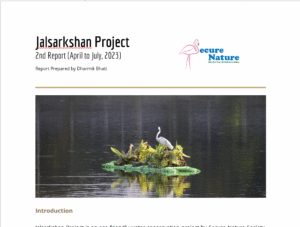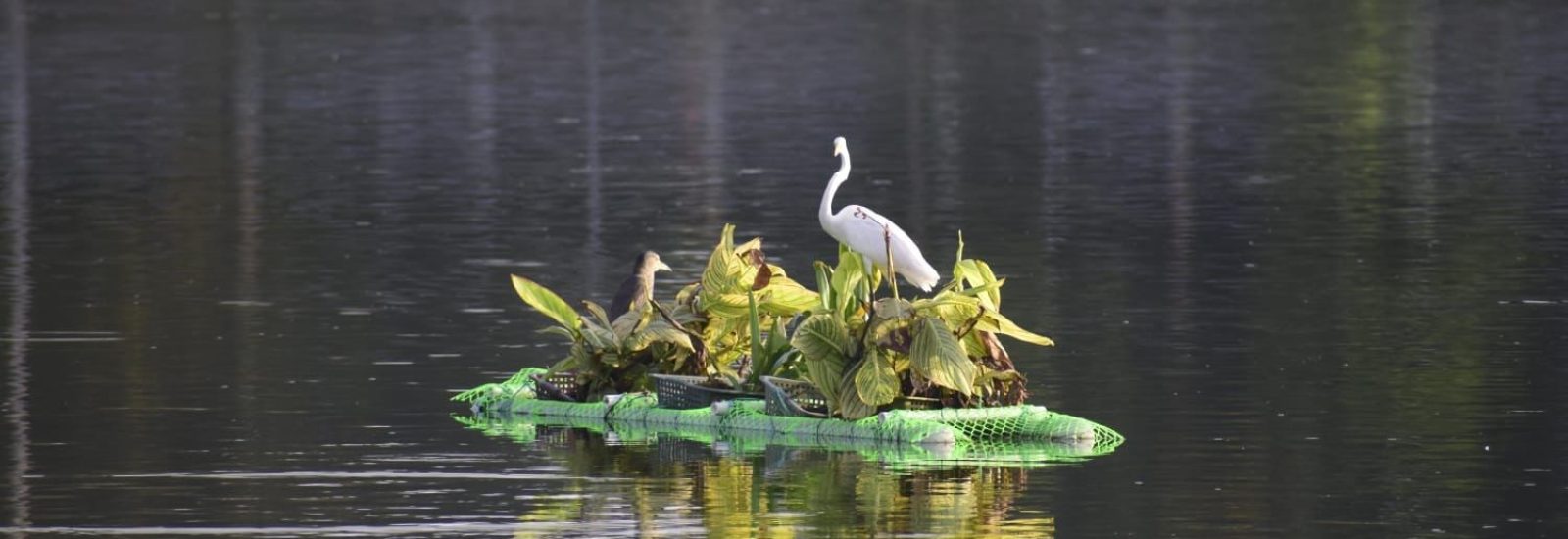
Jalsarkshan
Lake Conservation Program
Introduction
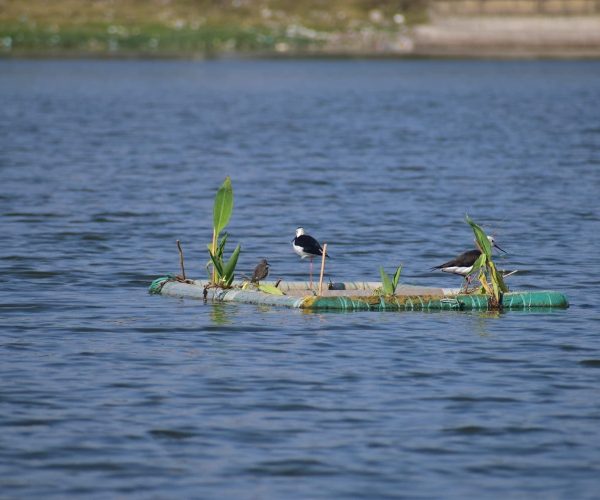
The Jalsarkshan Project is an innovative, eco-friendly water conservation initiative launched by Secure Nature Society. As part of this pilot project, several key activities have been undertaken—including the installation of floating islands, clean-up drives, and the collection of water samples for scientific analysis. These efforts aim to support long-term research and guide future conservation strategies.
Floating islands are man-made rafts planted with wetland vegetation that naturally filter and purify water. By enhancing water quality and supporting aquatic ecosystems, they play a vital role in sustainable water management.
This article highlights the progress of the Jalsarkshan Project, including the installation process of floating islands, water testing outcomes, current status, challenges faced, and potential solutions to further improve the health of local water bodies.
Through this initiative, Secure Nature Society is committed to restoring aquatic ecosystems and promoting responsible, sustainable management of our precious water resources.
Why Jal Sarakshan Was Needed – What We Observed
Our initial site visits to the lake revealed an alarming environmental crisis.
- The water had turned a murky green, a strong visual indicator of algal blooms caused by nutrient overload and stagnant water.
- Plastic waste, bottles, and other trash were scattered across the surface and along the banks—clearly showing neglect and a lack of waste management.
- We found that sewage water was directly entering the lake, bringing with it harmful pathogens, chemicals, and organic waste.-
- The consequences were heartbreaking: many fish were found dead, floating near the surface, and even a few birds had perished near the shore—likely due to contaminated water and lack of food.
It was clear this wasn’t just pollution—it was ecological collapse. What should have been a source of life and biodiversity had turned into a toxic zone.
This disturbing reality is what gave birth to Jal Saraxan—a mission to revive our water bodies, restore balance, and bring back life, one lake at a time.
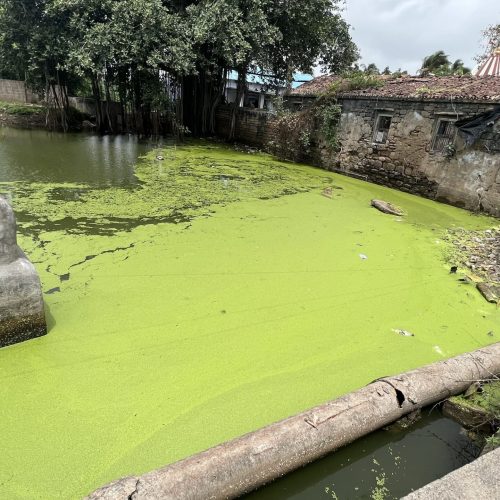
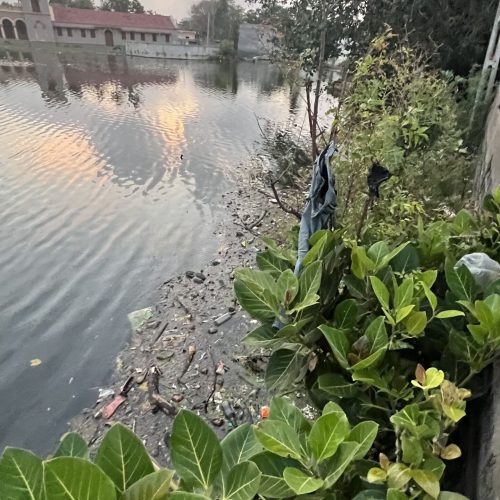
Water Lab Testing and Samples
To understand the lake’s declining health, Secure Nature conducted regular water sampling and lab testing over the past few months—sponsored by Secure Nature and Corals Studio. Samples were collected from various spots in the lake and its inlet streams, testing for 12 key parameters including Ammonia, Dissolved Oxygen (DO), Nitrate, Phosphate, TDS, pH, EC, and more.
What the Tests Revealed
Results pointed to a high concentration of nutrients and toxic chemicals—mainly from sewage inflow, plastic waste, and organic buildup over the years. These factors disrupted the nitrogen cycle, encouraged harmful bacteria, and severely affected aquatic life.
- During a major fish die-off, sample readings showed:
- Ammonia levels above 7 ppm
- pH between 8.5 and 9.5
- Water temperature around 32°C
- Total Hardness over 225 ppm (classified as very hard)
At higher pH and temperatures, non-toxic ammonium converts into toxic ammonia (NH3)—damaging fish gills, weakening immune systems, and allowing bacterial infections to take hold.
Duckweed & Dissolved Oxygen
We also observed excessive duckweed growth in canals, a sign of nutrient pollution. While duckweed helps absorb ammonia, too much of it can block sunlight and reduce dissolved oxygen levels. DO readings fluctuated—rising after the first monsoon rains but dropping again as duckweed expanded, especially in small pond.
Our ongoing analysis shows a clear inverse relationship between ammonia and DO levels, confirmed with support from ecological experts.
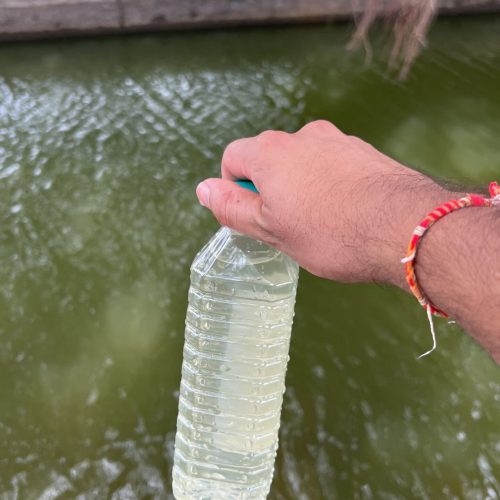
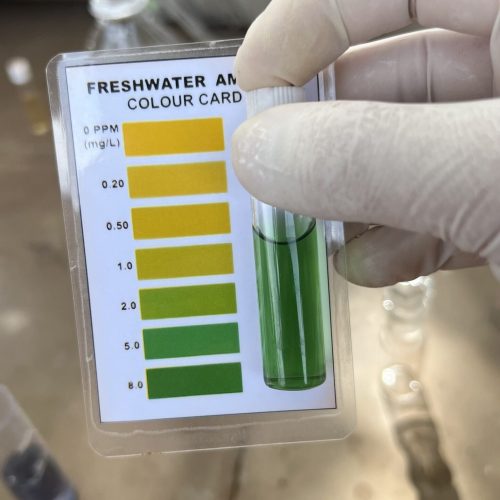
Our Solution – Floating Islands
To address the rising pollution and ecological imbalance in the lake, we introduced an innovative, nature-based solution: Floating Islands.
Floating islands are essentially artificial rafts planted with native vegetation. These islands float on the water’s surface and offer multiple ecological benefits, acting as a natural filtration and regeneration system.
How Floating Islands Help:
🌱 Nutrient Absorption
The plants on the floating islands absorb excess nutrients like ammonia, nitrates, and phosphates directly from the water—helping to control algal blooms and restore the lake’s natural balance.
🌊 Improved Water Quality
By reducing the nutrient load, these islands improve water clarity and overall quality, making it safer for aquatic life.
🌾 Root Filtration & Erosion Control
The roots extend below the surface and act as natural filters, trapping sediments and pollutants. This also helps prevent shoreline erosion, especially in areas affected by water current or human activity.
🐟 Habitat Creation
The islands provide a safe habitat for fish, birds, and insects, encouraging biodiversity to return to the lake ecosystem.
🌿 Aesthetic & Educational Value
Beyond ecological benefits, floating islands add beauty to the lake and serve as a powerful example of eco-engineering, inspiring community awareness and action.
By installing floating islands in strategic spots across the lake, we’re not just treating symptoms—we’re reviving the natural systems that keep water bodies alive and thriving
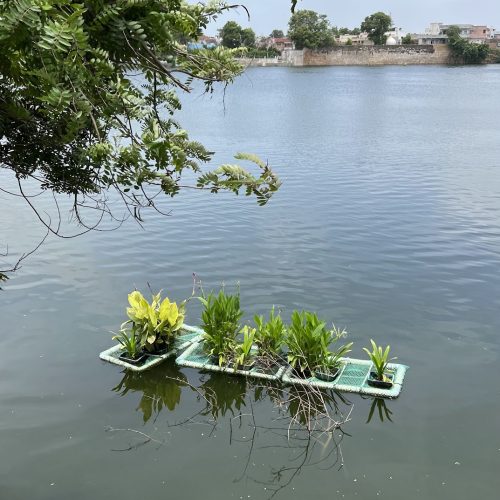
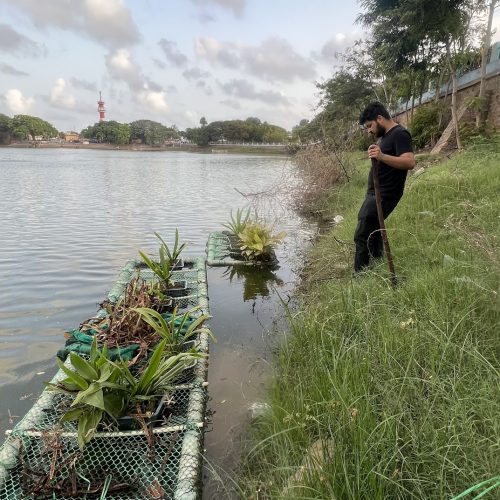
Challenges We Faced
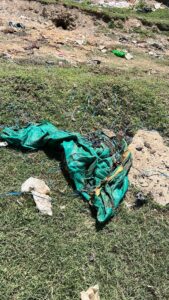
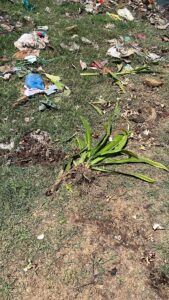
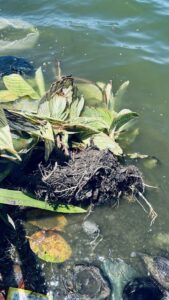
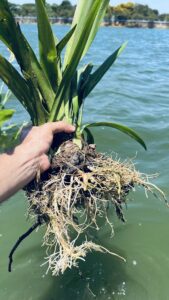
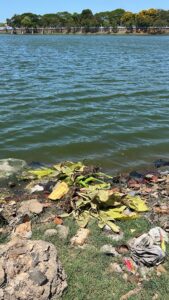
Further Solutions for Lake Water Quality Problems
Over the past two years, Secure Nature has been tirelessly working to improve the lake’s condition by conducting water tests, installing floating islands, and removing hundreds of kilograms of plastic waste. Despite these efforts, it has become clear that our actions alone aren’t enough to restore the lake to its natural state. Support from local authorities and adequate resources are essential to successfully implement long-term, sustainable solutions.
We’ve designed a multi-faceted strategy focused on ammonia reduction, sewage management, and plastic pollution mitigation, all while preserving the lake’s existing ecosystem.
Sewage Management:
Improve Sewage Treatment: Establish treatment facilities near the inlet, utilizing eco-friendly, layered filtration systems that slowly clean the water without damaging the environment.
Ammonia Reduction:
Enhance Aeration: Increase oxygen levels through diffusers, fountains, and waterfalls. Higher oxygen levels support beneficial bacteria that convert toxic ammonia into safer compounds.
Floating Wetlands: Create floating wetlands with aquatic plants to absorb excess nutrients like ammonia, naturally reducing water pollution.
Plastic Pollution Mitigation:
Source Control: Implement policies to reduce plastic use, promote reusable alternatives, and enforce proper waste disposal practices.
Cleanup Initiatives: Organize regular cleanup events, involving local communities, schools, and organizations to remove plastic waste from the lake.
Nutrient Management:
Buffer Zones: Create vegetated buffer zones along the lake’s edges to act as natural filters, preventing nutrients from reaching the water.
Sustainable Land Use: Encourage eco-friendly farming practices to minimize nutrient runoff into the lake.
Education and Awareness:
Community Engagement: Educate local communities on the impact of sewage and plastic pollution through campaigns in schools, local organizations, and residents.
Regulation and Enforcement:
Enforce Regulations: Implement stricter regulations on sewage discharge and plastic waste. Enforce fines for non-compliance to encourage better waste management practices.
Monitoring and Adaptation:
Regular Monitoring: Set up ongoing water quality monitoring to track ammonia levels, plastic pollution, and overall health of the ecosystem. This data will help us make adjustments to the approach as needed.
While these solutions can significantly reduce human-induced fish deaths, they cannot prevent those caused by natural factors. However, they are crucial steps toward a healthier, sustainable lake ecosystem.
What you can do
You don’t need to be a scientist or an environmentalist to help save our lakes. Small, conscious actions by everyday people can create a big impact. Here’s how you can be part of the change:
Don’t throw trash into lakes, ponds, or rivers – even one plastic wrapper can harm aquatic life.
Avoid feeding oily or processed food to fishes and birds—it pollutes the water and harms wildlife.
Join local lake clean-up drives or volunteer with NGOs working on water conservation.
Donate to organizations that are actively restoring water bodies—your support helps fund tools, research, and manpower.
Reduce your plastic use – choose reusable bottles, bags, and containers to minimize waste generation.
Spread awareness – talk to friends, family, and your community about the importance of clean water and how human actions affect it.
Support eco-friendly brands that focus on sustainable packaging and waste reduction.
Report illegal dumping or pollution – inform local authorities if you see sewage or industrial waste being discharged into a water body.
Participate in environmental workshops or sessions to stay informed and share knowledge with others.
Respect biodiversity – don’t disturb nesting birds, aquatic plants, or wild animals near lakes and ponds.
Even one action from your side can spark change. When more people care, cleaner lakes aren’t just a dream—they become a reality.
Annual Project Report
Donors / Collaborators
MICT, Mundra (DP World)
(10 floating islands and partial funded boat)
Vivan Consultancy
(1 Floating islands, life jackets, plants )
Corals Studio
(All water sample tests)
Volunteers Involved
Devarsh Joshi
Deviyan Gadhavi
Dhairya Mehta
Dharmik bhatt
Dhavalsing Rathod
Hiren Gadhavi
Jayant Jakhiai
Jigar Khatri
Milan Joshi
Milan Mehta
Monika Joshi
Raj Bajaria
Ramesh Goshwami
Vasudev Bhanushali
Timeline of Project
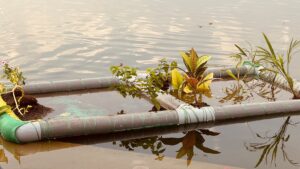
We started the project by testing the first pipe structure with the financial help of Vivan Consultancy.
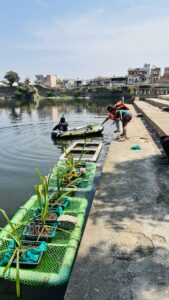
10 Floating Islands Deployed
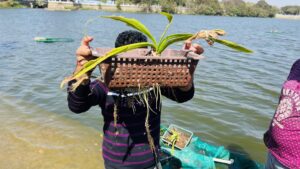
10 Floating Islands Deployed

